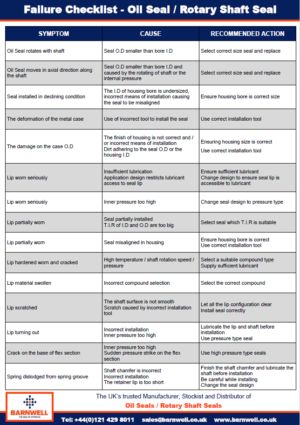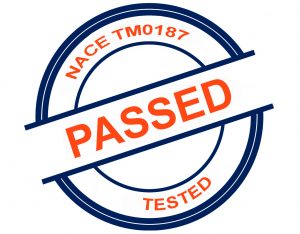Oil Seal Failure Checklist

A guide to why your Oil Seal / Rotary Shaft Seal may fail The below Oil Seal Failure Checklist provides information about seals leakage to those involved in the application and maintenance of Rotary Shaft Seals. Identifying and correcting the cause of leakage will assist the trouble-free, efficient and extended operation. There are two parts an Oil Seal / Rotary […]
Read MoreWhat is Oxygen Cleaning

What is Oxygen Cleaning / Component Cleaning? Oxygen Cleaning is a method that helps remove a variety of contaminants from components that are intended for use with either liquid or gaseous oxygen. These contaminants include oil, grease, organic or inorganic, and scale and if left alone they can cause blockages and potential risks including fires. Contaminants in an oxygen-rich system […]
Read MoreSemiconductor Manufacturing Process
Semiconductor Manufacturing Process Overview: Plasma, Thermal & Wet Processes Synergistic process technologies that have some of the most demanding environments for elastomer materials are etch, ash/strip, deposition, thermal and plasma processing. They are frequently confronted throughout the manufacture of: MEMS Flat Panel Displays (FPD) LED/OLED HBLED Solar Cells (Concentrator, Multi-Crystalline, Crystalline) Logic and memory Photovoltaic cells Optoelectronics Power devices Semiconductor […]
Read MoreSB Open Letter

M Barnwell Services Ltd is open and continues its operations with enormous thanks to its staff and supply chain. We are extremely proud at this unprecedented time to support global manufacturers for new product and in their aftermarkets to service equipment that supports essential sectors which are on the front lines to stop the spread and impacts of the Coronavirus […]
Read MoreRoHS Directive

RoHS Directive Overview What is RoHS? RoHS, also known as Directive 2011/65/EU, stands for Restriction of Hazardous Substances. Originated by the EU, it restricts the use of particular hazardous materials discovered in Electrical and Electronic Equipment (EEE). All corresponding products in the UK market must pass RoHS compliance. EU Directive 2011/65/EU (Restriction of the Use of Certain Hazardous Substances in […]
Read MoreISO23936-2

ISO23936-2 Standard Overview ISO (the International Organization for Standardization) is a global federation of national standards bodies. ISO23936 (Part 2: Elastomers) ‘’Petroleum, petrochemical and natural gas industries – non-metallic materials in contact with media related to oil and gas production.’’ This standard portrays the procedures and requirements for the elastomeric material to qualify for use in machinery for Oil & […]
Read MoreM Barnwell Services Win Distributor of The Year 2019

M Barnwell Service wins PPE’s Distributor of the Year award for the second time in three years! In February, M Barnwell Services, the UK’s leading manufacturer, stockist and distributor of fluid sealing products and services, were awarded IDEX Corporation (PPE) 2019 Distributor of The Year. Michael R Barnwell, Managing Director, said: “We are delighted and proud to again win this […]
Read MoreREACH Regulation

REACH Regulation Overview REACH stands for Registration, Evaluation, Authorisation, and Restriction of CHemicals. Implemented in June 2007 to develop and enhance the previous legislative structure for chemicals in the EU countries. It has become one of the most composite and profound pieces of legislation. It is a Regulation, rather than a Directive. Any company producing, importing, using or placing a […]
Read MoreNACE TM0187

NACE TM0187 Standard Overview Established in 1943 the ‘’National Association of Corrosion Engineers’’ (NACE) became the worldwide leader in evolving and improving the prevention of corrosion and control standards, education and certification for Oil & Gas Manufacture, Refining and Chemical Processing industries. NACE TM0187 – ‘’Elastomeric materials in sour gas environments.’’ The standard establishes a test method that estimates the […]
Read MoreNACE TM0297

NACE 0297 Standard Overview Established as the National Association of Corrosion Engineers (NACE) in 1943 it fast became the global leader in developing corrosion prevention and control standards, education and certification for Oil & Gas production, Chemical Processing, and Refining Industries. NACE TM0297- ‘’Effects of high temperature, high-pressure carbon dioxide decompression on elastomeric materials.’’ NACE TM0297 introduces test methods to […]
Read More